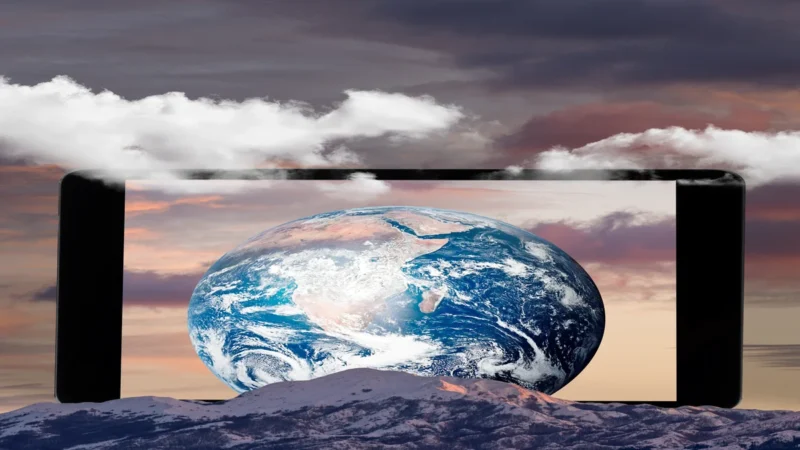10 Effects of Global Warming: Far-Reaching Consequences Explained

Global warming, driven by human activities and the emission of greenhouse gases, has become one of the most pressing challenges of our time. Its effects are wide-ranging and can be felt across the globe. In this article, we will examine ten significant effects of global warming, providing detailed explanations and exploring their implications for our planet’s ecosystems and human societies.
Rising Sea Levels:
Rising temperatures contribute to the melting of glaciers and polar ice, leading to an increase in sea levels. As a result, coastal regions face threats such as coastal erosion and more frequent and severe flooding events, endangering human settlements and ecosystems.
II. Extreme Weather Events
Global warming intensifies extreme weather events, including hurricanes, heatwaves, droughts, and storms. Warmer ocean temperatures fuel the formation of stronger hurricanes, while higher temperatures and changing precipitation patterns exacerbate heatwaves, droughts, and storms, causing significant damage to infrastructure and disrupting ecosystems.
III. Disruption of Ecosystems
Ecosystems around the world are under threat due to global warming. Changes in temperature and precipitation patterns disrupt habitats, leading to biodiversity loss and the potential extinction of numerous plant and animal species. This loss of biodiversity can have cascading effects on ecosystem functioning and disrupt essential services they provide to human societies.
IV. Melting Polar Ice and Glacier
Global warming accelerates the melting of polar ice and glaciers in regions such as the Arctic and Antarctic. This process contributes to rising sea levels and alters ocean currents, potentially disrupting global weather patterns. Additionally, the loss of ice reduces the Earth’s reflectivity, leading to a positive feedback loop that further increases temperatures.
V. Changes in Rainfall Patterns
Global warming affects rainfall patterns, leading to increased frequency and intensity of droughts and floods in different regions. These changes pose significant challenges for agriculture and water resources, affecting food production and water availability for human populations.
VI. Threats to Human Health
Rising temperatures and changing weather patterns have implications for human health. Heatwaves increase the risk of heat-related illnesses, while shifts in temperature and precipitation patterns affect the distribution of infectious diseases. Moreover, air pollution, exacerbated by global warming, further contributes to respiratory and cardiovascular problems.
VII. Ocean Acidification
Increased carbon dioxide emissions are not only warming the planet but also causing ocean acidification. This process has devastating effects on marine ecosystems, particularly coral reefs and shellfish, as it hinders their ability to form shells and skeletons, threatening their survival and disrupting the entire marine food chain.
VIII. Agricultural Challenges
Global warming presents challenges to agriculture, impacting crop yields and food security. Changes in temperature and precipitation patterns affect the timing of planting and harvesting, while the spread of pests and diseases becomes more prevalent. Water scarcity, exacerbated by climate change, further compounds agricultural challenges.
IX. Economic Impacts
The effects of global warming can have substantial economic consequences. Extreme weather events and rising sea levels damage infrastructure, leading to significant financial losses for governments, businesses, and individuals. Additionally, insurance costs rise as companies face increased claims related to climate-related disasters.
X. Societal Displacement and Conflict
As a result of rising sea levels, extreme weather events, and the degradation of agricultural resources, global warming contributes to societal displacement and potential conflicts. Climate refugees may be forced to migrate, putting additional pressure on receiving regions and potentially leading to social unrest and geopolitical tensions.
Key Takeaways:
Global warming has far-reaching effects on our planet, ecosystems, and human societies. From rising sea levels and extreme weather events to biodiversity loss and agricultural challenges, the consequences of climate change are profound and demand urgent action to mitigate and adapt to these changes. By understanding and addressing these effects, we can work towards a more sustainable and resilient future for generations to come.
FAQs about Global Warming
Q: What is global warming?
Global warming refers to the long-term increase in Earth’s average temperature due to human activities, primarily the emission of greenhouse gases such as carbon dioxide into the atmosphere.
Q: How does global warming affect sea levels?
Global warming leads to the melting of glaciers and polar ice, resulting in rising sea levels. This poses risks to coastal regions, including increased coastal erosion and more frequent and severe flooding events.
Q: What are the impacts of extreme weather events caused by global warming?
Extreme weather events, such as hurricanes, heatwaves, droughts, and storms, are intensified by global warming. These events can cause significant damage to infrastructure, disrupt ecosystems, and threaten human lives and livelihoods.
Q: How does global warming contribute to biodiversity loss?
Global warming disrupts ecosystems by altering temperature and precipitation patterns. This disruption can lead to habitat destruction, biodiversity loss, and the potential extinction of numerous plant and animal species.
Q: What are the consequences of melting polar ice and glaciers?
The melting of polar ice and glaciers due to global warming contributes to rising sea levels, alters ocean currents, and potentially disrupts global weather patterns. This process also reduces the Earth’s reflectivity, leading to a positive feedback loop that further increases temperatures.
Q: How does global warming impact rainfall patterns?
Global warming affects rainfall patterns, resulting in increased frequency and intensity of droughts and floods. These changes pose challenges for agriculture, water resources, and food production.


